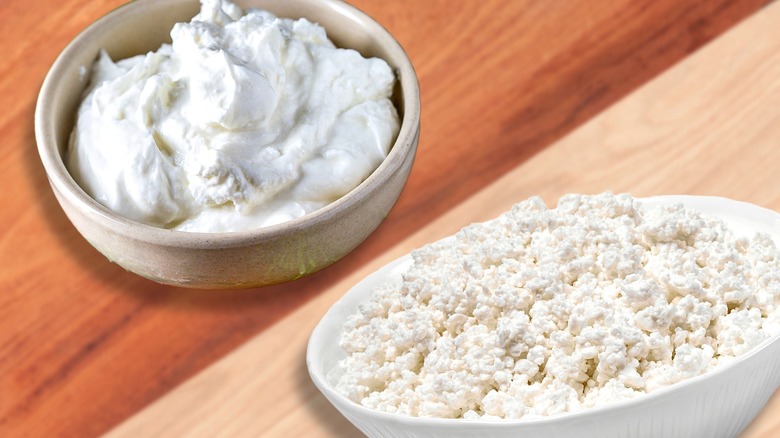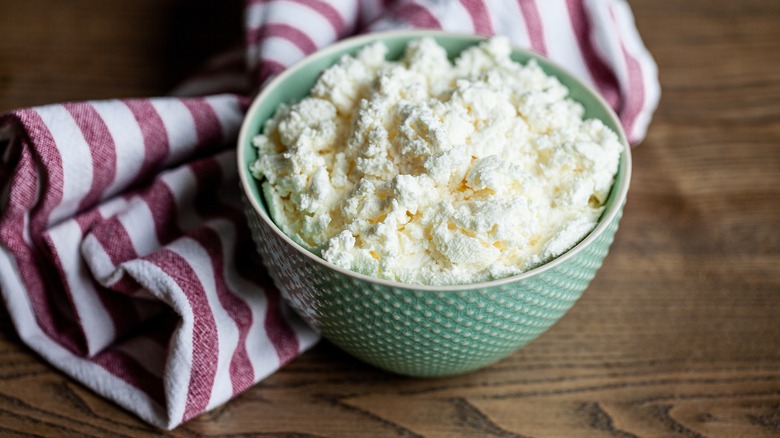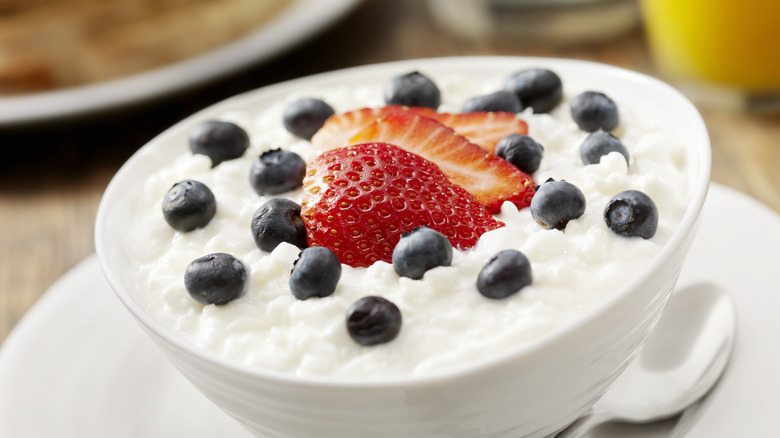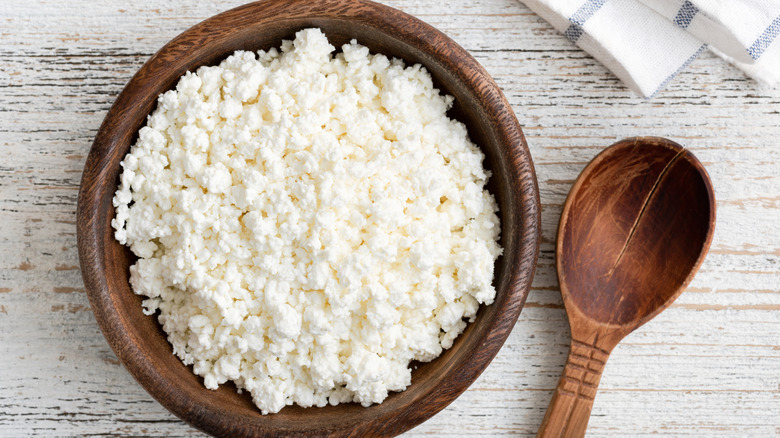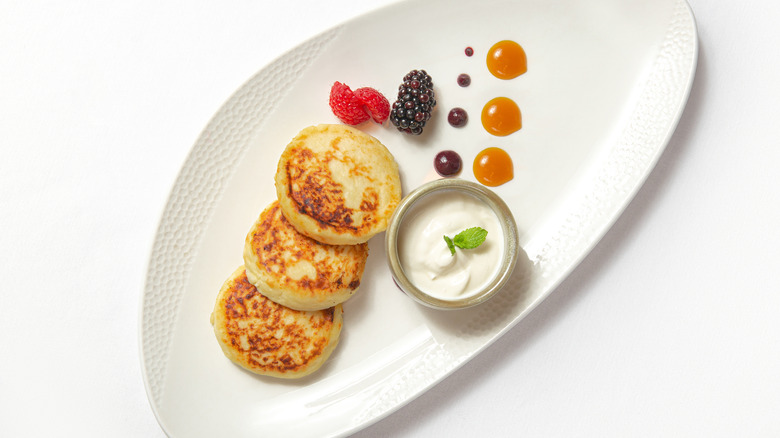Pot Cheese Vs Cottage Cheese: Why You Shouldn't Lump Them Together
From year-old aged parmesan, to a soft cream cheese, dairy serves up a medley of unique consistencies. Yet there's a special appeal to its texture in its simplest form — separated into curds and whey. Cheese curds are solid proteins formed at the earliest stage of cheese-making and are a delicious food of their own, ready for use atop poutine or in a snack. And they also form a range of distinguished products, like pot cheese and cottage cheese.
Differentiating between these young varieties can be tricky since they have a lot in common. Both are white and on the mushier side, with a pleasant tang and perhaps a hint of salt. They're used in cooking as much as consumed straight. However, the difference is in the details. The potted cheese is drained from whey just a bit longer, lending a drier, more curd-forward product. Meanwhile, cottage cheese has milk cream mixed into the curds, creating a liquid, uniform texture. From such a distinction, manifold differences emerge.
What is pot cheese?
Pot cheese is a freshly made dairy product formed by the separation of curds and whey. The white solids comprise its dense and dry texture, which has a pleasant, slightly tart flavor. It's easy to craft in a home kitchen, with the milk curdling imparted through buttermilk, yogurt, or other introduced acids. The process is carried out with heated milk — hence its name, pot cheese. As a result of its production ease, most dairy-loving cuisines craft their own version, employing milk from many varying animals.
A particularly notable version is called tvorog, which hails from Eastern European and German cuisine. It's used for desserts in Polish, Ukrainian, and Russian cooking and is often enjoyed on its own with fruit, jams, and nuts. It's often less salted and matches well with distinct sweet preparations. So, although it may seem similar to other fresh cheeses like farmer's cheese, it's a distinct creation with its own appeal.
What is cottage cheese?
Cottage cheese is also a freshly made dairy product composed of curds. It has a beautiful white color and a creamy, uniform consistency. Especially when purchased from the store, it often contains additional ingredients like cream and salt. After the curds are separated — oftentimes with the aid of live cultures — they're weighed down into a dense block. Cheesemakers then slice the block into small pieces before combining with the milk or cream to form the final result.
Tasty cottage cheese has been consumed in the United States for centuries. The name cottage cheese became common in the 19th century. From there on out, it became a popularly used food. Whether simply served with crackers, used in baking, or in dishes like lasagna, its balanced, creamy palate lends it to myriad food pairings. Plus, it's an excellent source of protein and nutrients, all the while remaining low-fat.
Pot cheese has a different texture than cottage cheese
Occasionally, the two cheeses are referred to interchangeably, which leads to confusion. However, the typically employed steps in production lend to different textures, their greatest differentiator. Pot cheese has larger, more defined curds as a result of a longer, more intensive drying time. Some processes keep the curds pressed down with an added weight for up to ten hours, forming a dry, condensed cheese. The exact consistency differs based on the preference and preparation, but the result typically resembles drier cheeses like feta in appearance.
Meanwhile, cottage cheese has a quicker, less-intensive drain. No additional pressure is applied, but the resultant filtration does accumulate into a cohesive block. Cheesemakers then slice the mass into pieces, which releases more liquid, before adding the cream into the mix. This yields a product with a uniform, nearly yogurt-like texture. It's easier to spread with a spoon and the cheese takes on a delicious creamy flavor, too.
The two cheeses encompass distinct culinary applications
Upheld by their distinguishable consistencies, the two cheese types take on unique culinary roles. The dry, crumbly pot cheese makes for delicious pancakes, specifically the Russian, Polish, and Ukrainian syrniki. In this dish, the cheese is formed into a batter with flour, eggs, and baking soda. Plus, the dairy product is also used to make desserts like tvorozhnik, a dense cheese cake and is used as a stuffing in blini and pastries. Pot cheese can also be used as a substitute for ricotta in a pinch, served with pasta or formed into gnocchi. Cottage cheese's texture would have too much liquid for such applications, meaning the two types aren't interchangeable.
However, cottage cheese takes on its own tasty applications. It's more gooey texture lends well to baked dishes, meshing with enchiladas, casseroles, and lasagna. It goes well into scrambled eggs or can form a dip. And it can even construct a deliciously creamy pasta sauce. Both dairy products are malleable and delicious, just necessitate some specialized culinary care.
